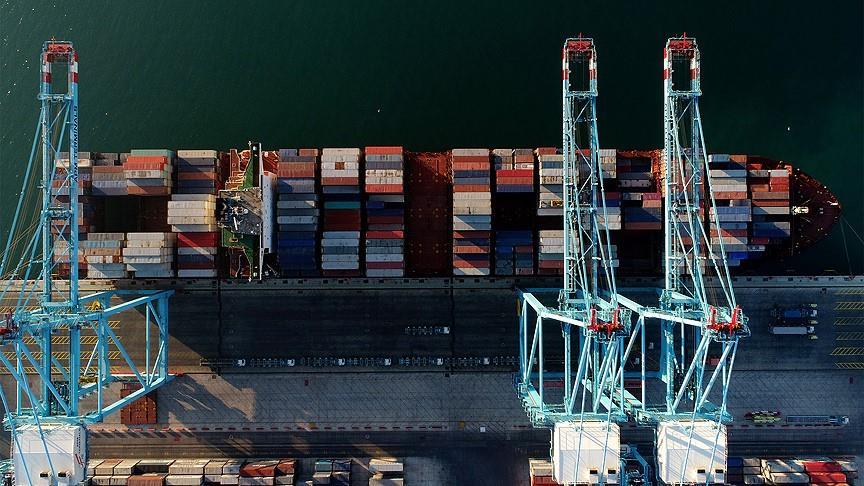- The Writer holds an MSc in Eurasian Political Economy & Energy from King’s College London and also an MA in European Studies from Sabancı University.
The choice of fuel is becoming an increasingly crucial decision for road and sea transportation, both in impacting profitability and in taking into account environmental concerns. As the days of easy oil are over, the decision to diversify away from oil is deemed a necessity in which marine and road transportation market investors are seeking greater opportunities. Gasoline and diesel are still the major fuels used in the transportation, making up approximately 25 percent of the world’s primary energy demand. And this is where natural gas plays a greater role in helping diversification and reducing greenhouse gas emissions while improving overall air quality.
Although renewables appear the best option among other energy sources in achieving zero emissions, nonetheless, given the relatively low level of renewables development in the transportation sector, its role is likely to remain minimal in the years ahead, if not in future decades. In this regard, natural gas, as a bridge fuel, is becoming a much more relevant option.
Natural gas is proving lucrative for road and marine transportation given its environmental and economic cost advantages. Natural gas is much more competitively priced and its overall greenhouse (GHG) emissions are almost half that of oil. In the transportation sector in the U.S. China and Europe, the role of natural gas has become increasingly critical. This has been seen with LNG with lower hub prices, namely Henry Hub in the U.S. and the NBP in the U.K. The lower cost of LNG over the past few years, thanks to gas hub pricing, instigates stiff competition against other fuels sources, such as diesel, at a time when there is more of a global consensus towards mitigating the negative effects of fossil fuels and with greater environmental concerns over GHG emissions.
These concerns have manifested in greater incentives to develop cleaner engine technology, which has led to research and development in hybridization for optimum efficiency and reduced emissions. The proliferation of new natural gas engines and the new generation of hybrid vehicles continues to challenge the market for engines run on fossil fuels. This hybridization has extended to the aviation sector through incentives in developing fuel derived from natural gas. This proved successful in 2009 when Qatar Airways was the first commercial airlines to fly from Doha to London to use fuel derived from natural gas.
As refueling technology develops, and the cost to switch to natural gas drops when strict emission regulations are implemented, gas consumption in the transportation sector will become even more promising.
In its annual future gas forecasting, Cedigaz projects that LNG consumption in road transportation will rise from 45 million tons per annum () in 2025 to 96 in 2035. It is estimated that China, which currently has more than 100 thousand LNG vehicles and over 1,100 refueling stations, will lead the way in this market. Cedigaz in their base case scenario, also forecasts that LNG demand for marine bunkering will grow exponentially by as much as 77 from 2015 to 2035.
At a global level, the usage of natural gas vehicles has been on the rise over the past decade. While Latin America has been the leader in natural gas vehicles sharing approximately more than 50 percent of all global gas-powered vehicles in 2003, the Asia Pacific region is also showing great potential. In 2008, after five years of growth, Latin America and Asia Pacific almost equalized in the percentage share of global natural gas powered vehicle ownership at 40 percent and 37 percent, respectively.
Furthermore, the heavy-duty vehicle market is expected to gain a greater market share in the future given that these lorries can offer reduced emissions and have lower servicing needs compared to diesel engines, which in turn will result in overall cheaper running costs.
Despite the many positive advantages of these natural gas vehicles in the transportation sector, there are still major hurdles in gaining a bigger market share. The biggest obstacle is the problem of an insufficient refueling infrastructure, and this is the area in which a greater volume of natural gas consumption would be of no use. Secondly, many operators consider the lack of spare parts in vehicle maintenance a hindrance. Additionally, the negative public perception on the performance of natural gas vehicles compared with diesel or other gasoline engines needs to be overcome in the short to medium term for their increased deployment.
Switching to natural gas as a primary fuel offers advantages over diesel or gasoline although this initial switch will require upfront investment. Some major hurdles will need to be resolved in the short to medium term to eventually benefit from these technologically innovative engines. They provide environmentally sound solutions and operate at relatively cheaper costs, which will ensure that natural gas will continue to be a preferred fuel of choice in the transportation sector in the years to come.
- Opinions expressed in this piece are the author’s own and do not necessarily reflect Anadolu Agency's editorial policy.


